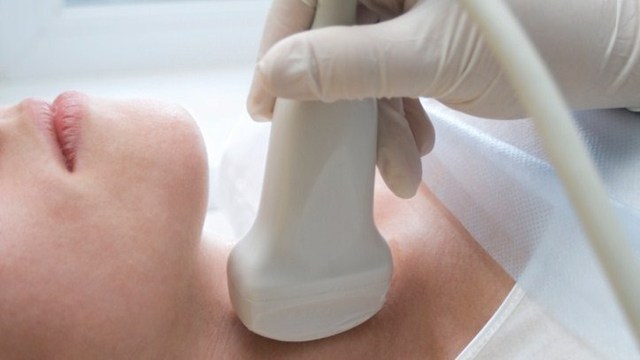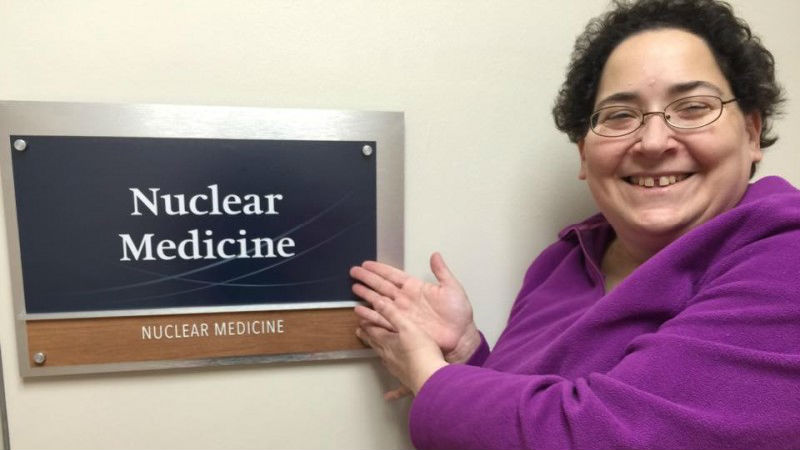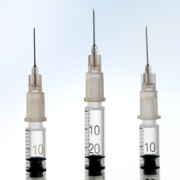Radioactive iodine, I-131, can both cause and treat thyroid cancer. This and other isotopes were recognized as a cancer risk in the survivors of the nuclear bombs at Hiroshima and Nagasaki. Researchers found that higher doses can be used to destroy malignant thyroid tissue that may remain after surgical treatment. I-131 is produced in nuclear medicine reactors, and has a half-life of about 8 days. It decays into the inert gas xenon by emitting an electron and a gamma ray.
Radiation therapy for most cancers is done with an external beam. Thyroid cancer is exceptional because the tissue absorbs most of the iodine in the diet. Thus, radioactive iodine can deliver energy to the tumor cells very efficiently. The electrons are absorbed mostly by the tumor, while the gamma rays have a longer range.
A recent article reports that the optimum dose of radioiodine is a topic for discussion. There are two ways to calculate it: (1) bone marrow dose limited, or (2) lesion-based. Dosages from 1.1 to 21.4 GBq (gigabecquerels) have been reported. The Becquerel is a radioactive decay rate, equal to one disintegration per second.
Radioiodine therapy is simple and painless; the patient simply swallows the prepared dose. Most of it will be absorbed by thyroid tissue. The part that is not absorbed will be excreted in the urine over a period of about 2 days. Half of the absorbed dose will decay over the first 8 days. Over the next 8 days, half of the remaining amount will decay. This process continues until the last atom has decayed: the radioactive decay rate drops by half over each time span of the half-life (8 days for this isotope). The patient will emit enough radiation to set off security detectors at airports and federal buildings for approximately months after treatment. Pregnancy is not recommended for at least six months to one year. Breast feeding is not allowed after radioiodine therapy. The patient should sleep alone and avoid prolonged contact with others for at least three or four days.
Clearly, there are risks to high doses of I-131. When you are radioactive enough to endanger others, you are subjecting your entire body to ionizing radiation. However, metastatic cancer is a serious risk as well. The authors of Reference 1 note there is evidence for both over-treatment and under-treatment, and more attention is needed to individualized therapy.
References:
1. Lassmann M et al, “Dosimetry and thyroid cancer: the individual dosage of radioiodine”, Endocrine-Related Cancer 2010; 17:R161 – R172.
2. Radiation information from the Centers for Disease Control:
http://www.bt.cdc.gov/radiation/pdf/measurement.pdf
3. More information online:
http://www.radiologyinfo.org/en/info.cfm?pg=radioiodine
Linda Fugate is a scientist and writer in Austin, Texas. She has a Ph.D. in Physics and an M.S. in Macromolecular Science and Engineering. Her background includes academic and industrial research in materials science. She currently writes song lyrics and health articles.






Add a CommentComments
There are no comments yet. Be the first one and get the conversation started!